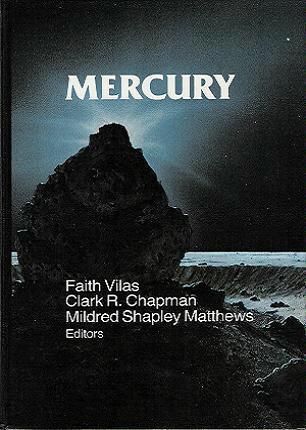
Mercury
by F. Vilas, C. Chapman, M. Matthews
Publisher: University of Arizona Press 1989
ISBN/ASIN: 0816510857
ISBN-13: 9780816510856
Number of pages: 794
Description:
Mercury is an extreme planet, and thus it provides a unique benchmark for testing our theories about the origin and evolution of other terrestrial planets. Emphasis is given on the planet's origin, its metal-rich composition, its thermal and geophysical evolution, and its cratering history; these topics are complex and controversial, and this book contains a variety of new perspectives on them.
Download or read it online for free here:
Read online
(online preview)
Similar books
 Planetary Photometry
Planetary Photometryby Max Fairbairn
The text covers principles of planetary photometry: radiance and the equation of transfer, diffuse reflection and transmission, albedo, scattering and absorption, net flux and exitance, and a brief history of the Lommel-Seeliger law.
(12194 views)
 Chondrules and their Origins
Chondrules and their Originsby Elbert A. King - The Lunar and Planetary Institute
The origins of chondrules are fundamental problems of most stony meteorites and some planetary surface samples. The contents of this volume are designed to provide the reader with a broad overview of current ideas in this area of research.
(9579 views)
 Voyager 1 and 2: Atlas of Six Saturnian Satellites
Voyager 1 and 2: Atlas of Six Saturnian Satellitesby Raymond M. Batson - NASA
Published in 1984 after several years of photographic analysis, this book presents maps of the six Saturnian moons which were investigated by the Voyager 1 and 2 spacecraft during their flyby missions of Saturn in 1980 and 1981, respectively.
(15108 views)
 Vision and Voyages for Planetary Science in the Decade 2013-2022
Vision and Voyages for Planetary Science in the Decade 2013-2022- National Academy of Sciences
This book surveys the current state of knowledge of the solar system and recommends a suite of planetary science flagship missions for the decade 2013-2022 that could provide a steady stream of important new discoveries about the solar system.
(8981 views)